Finger and Thumb Supports
How often do you use your fingers and thumb? Or maybe it is more appropriate to ask how often you rest them. The fact is, your hands are one of the most abused parts of your body. They are used to do just about everything, every day.
If you walk too far, your feet get tired and so you need to rest them. Once you reach the office, your feet can often take the backseat, especially if you are doing a desk job. However, the same cannot be said for your hands, no matter what area of work you are in, as they have no right to get tired. Lunch or a quick snack break would be your most feasible solution. However, you do still have to use your hands to eat.
As a result of all this, finger and hand injuries are common nowadays. They are also called trivial injuries. However, do not be fooled by the word “trivial” because untreated finger and/or thumb fracture or sprain do have significant functional consequences if not treated properly. Remember that you will not get a replacement finger or thumb if the one you have becomes non-functional anymore.
These trivial hand and finger injuries come in a wide spectrum that it is easy to assume and hard to diagnose without medical guidance. The good news is that most of these finger and hand injuries are treatable by non-operative procedures, mainly through the use of supports in the form of slings or splints. Other non-surgical treatments include gentle reduction and therapies.
Have you been experiencing unusual sensations in your fingers and thumb? Are they unusually stiff and painful at times? If you know you have been using your thumb and fingers abusively throughout the years and you are feeling such unusual things, then it is high time you have them checked by a medical professional to address your concerns.
It isn’t only injuries which finger braces can help. You may be affected by trigger finger, rheumatoid arthritis, ehlers danlos, or tendonitis.
A common mistake that most people make is thinking that the sprain and minute fractures should heal on its own. What people today must keep in mind is that there is no such thing as overtreatment, but there is the risk of permanent disability for neglected injuries. Get professional help to decide which medical brace you require.
How to Effectively Treat Finger and Thumb Injuries
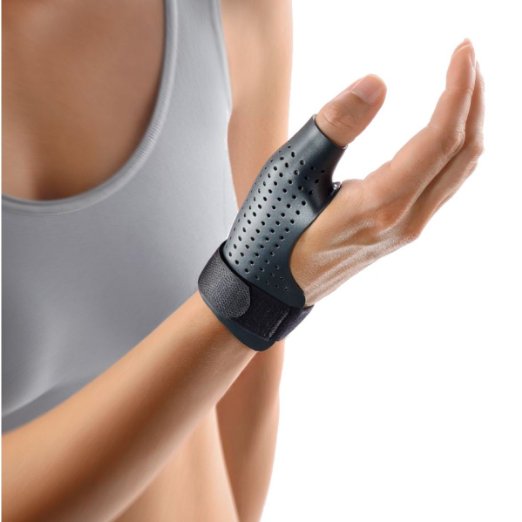
The main purpose of treating any sort of finger and/or thumb complaint is to bring back the normal functionality of the problematic finger and possibly prevent any further complications or more serious condition. Surgery is the last resort in such cases because of the increased risk for more complications and fear that it might do more harm than good.
Researchers have concluded that immobilization of fingers for at least a minimum of four weeks can lead to more problematic stiffness but the splinting of fingers and thumbs which allows small motions of the affected fingers achieves amazing results.
A popular treatment is closed reduction which is performed for digital fractures and severe misalignments. This is done by performing axial traction commonly followed by the reversal of the deformity. The fingers are then inspected for stability and will most likely be splinted, or buddy taped until it heals fully. X-rays are generally needed for better diagnosis of such serious injuries. But for the more common finger and thumb injuries, here are the common practices:
Distal Phalangeal/Tuft Fractures
This is a very common finger injury that results from crushing, thus, producing a significant soft tissue injury. The most common sign for this type of fracture is a subungual hematoma in the proximal half of the nail bed (most likely where the finger or nail is crushed).
If your nail plate remains intact, you are lucky because that could serve as your splint. But if you are not lucky enough and your nail plate is cracked or totally crushed, then you may need to have a small finger splint in the distal phalanx. The splint may include the DIP or distal interphalangeal joint but not the PIP or proximal interphalangeal joint.
The splint should give protection to the injured finger until the pain fully resolves. It must also be noted that decreased function can be expected for as long as six months which is why continues care and therapy is necessary.
The splints commonly recommended for this type of fracture are a typical clamshell splint, L-shaped Alumafoam splint, and/or tight circumferential taping which should last for two to three weeks.
Mallet Fractures
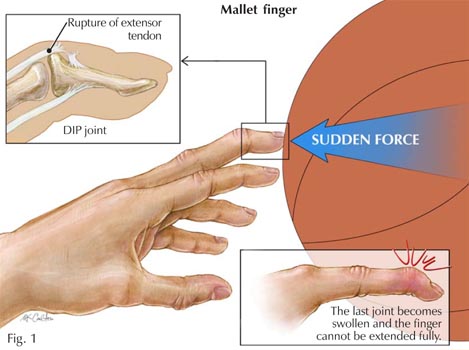
This is the most common injury among the family of distal phalangeal base fractures. It is also known as the baseball finger since it usually happens as a result when a ball (or any other object) strikes the tip of the finger causing it to bend over. As a result, you will instantly see the fingertip drooping, and it would not be straightened easily.
The drooping fingertip is caused by a tear in the extensor tendon inside your finger. This has been known to happen even in a simple and very common activity such as tucking in bed sheets. However, if a bone is pulled away along with the tendon, then it will be called avulsion injury and needs more serious treatment.
First aid treatment for mallet and avulsion fractures is to put ice immediately and keep it elevated above the heart as you travel to your family physician who can then inspect it better and give a better recommendation. The nonsurgical treatment that is usually recommended is splinting which should hold the fingertip straight and extended until the time it is healed fully.
Splinting typically takes up to eight weeks with religious care, or else healing can be disrupted. Untreated mallet fractures can result in permanent stiffness and deformity. Commonly used splints for this type of finger fracture are stack splints, dorsal aluminum foam splint, volar splints, premolded plastic splints, and even skin-tight plaster casts.
Middle and Proximal Phalange Shaft Fractures
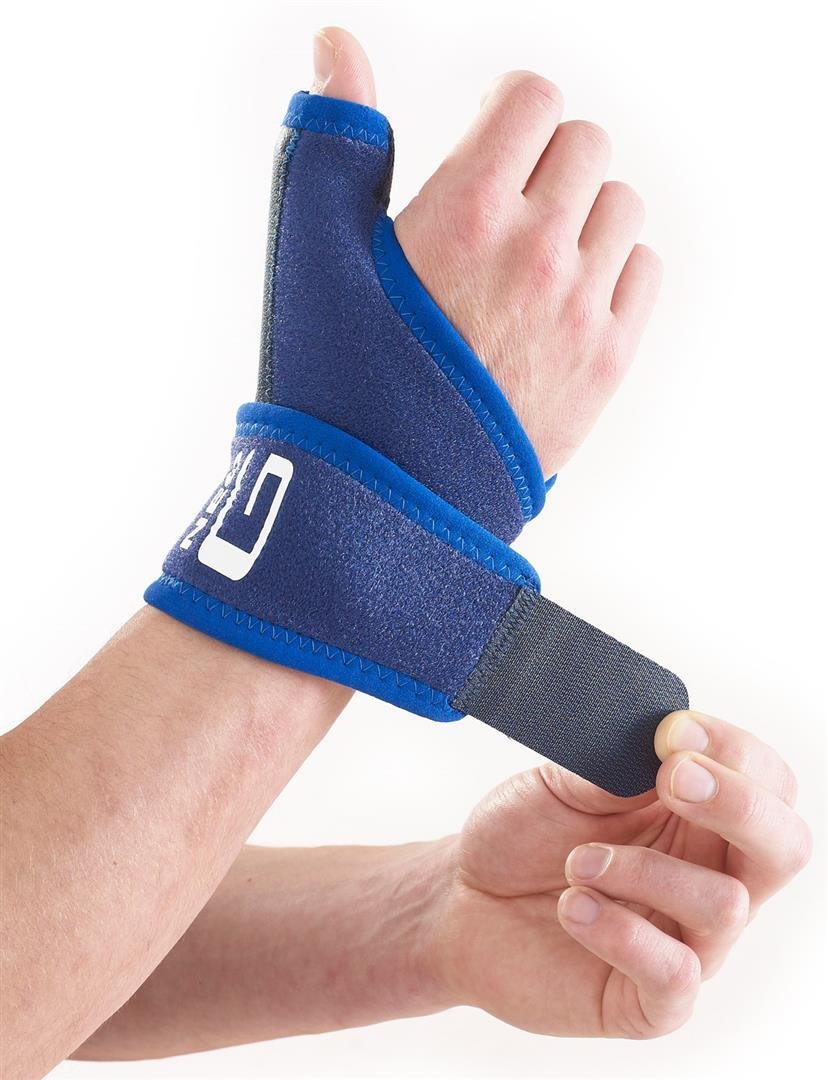
This type of fracture is further categorized into two – non-displaced and displaced fractures. Non-displaced shaft fractures are easier to treat especially if caught early. They can be splinted or buddy-taped for three to four weeks to allow complete healing process.
Displaced shaft fractures, on the other hand, is more serious as they are unstable even after reducing. The most common displaced shaft fracture happens at the proximal phalanx that can lead to a visible deformity. Depending on the severity of the fracture, the physician may recommend closed reduction or splinting. Close follow-up is highly recommended for such cases.
Metacarpal Fractures
This is pretty much similar with the phalange shaft fractures in the way that they can be minimally displaced. The most common metacarpal fracture is called the boxer’s fracture where the small finger metacarpal neck is fractured. The most common treatment is closed reduction followed by strict splinting and close follow-up until fully healed.
The Most Common Finger and Thumb Supports
Physicians today are learning the art of conservative therapy. Understand that you will not be suggested for surgery unless it is highly indicated. Depending on the severity of the thumb and finger fracture, they will determine or even try to do the more conservative therapy first to salvage the finger and restore normal function. Let us take a look at the most common finger and thumb supports available today:
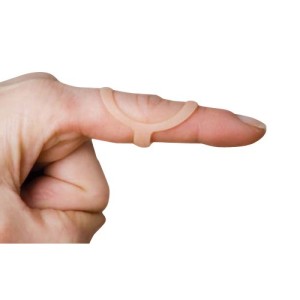
Oval 8-Finger Splint
This can be used for mallet fractures, swan neck and boutonniere deformities, trigger finger, trigger thumb, arthritis, lateral deviation, and hyper-mobility. It uses 3-points of pressure with usually an open-air design to somehow try to keep the fingers comfortable.
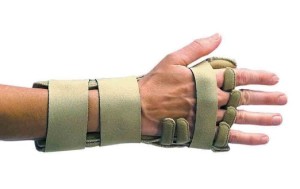
Comforter Splint
This is specifically used as a night splint by those who have problems with the wrist and the MP joints. It reduces inflammation and morning stiffness that can be caused by arthritis or even stroke and other neurological impairments.
This is highly preferred because they are easy to wear and remove and comes with flexible padding to still let the patient to bedding and nighttime activities while worn.
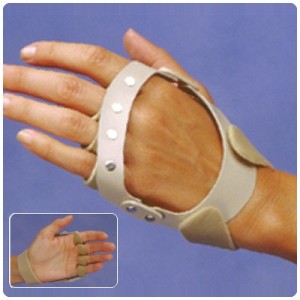
Polycentric Hinged Ulnar Splint
This is recommended for patients with mild to moderate ulnar deviation at the MP joints. The hinge still allows full flexion and extension of the fingers and comfort is further provided by the softly cushioned finger.
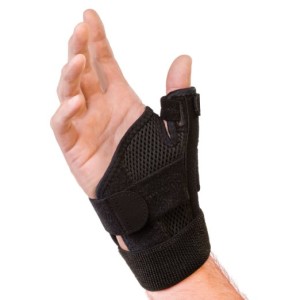
Thumb Splints
This can be used to save and protect the thumb from arthritis and other ligament injuries and problems. They are recommended for those with basal joint arthritis, gamekeeper’s thumb, skier’s thumb, and all sorts of thumb strains and sprains.
This splint basically reduces the pain whenever you pick, pinch, or grip objects as it stabilizes the thumb base, therefore relieving pain that is usually caused by the grinding pain.
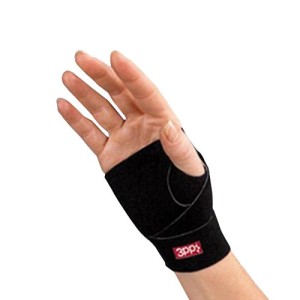
Thumb Slings
This is highly favored for mild injuries and prevention of injuries. It gently hugs the thumb joint in order to reduce pain and prevent the displacement of joints. In doing so, it allows healing of the thumb joint, works great for arthritis and ligament injuries, and ideal for all-day activity use.
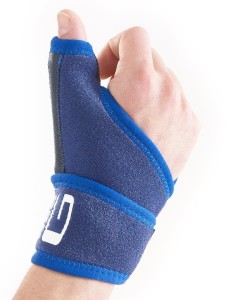
Thumb Brace
This is carefully designed to totally limit movements around the thumb especially that of the index finger in order to prevent further damage to the thumb. Highly recommended for those suffering from thumb arthritis, thumb ligament injuries, skiers thumb, and as an after-care following surgery.
Thumb and finger support provides enormous help especially with regards to the non-emergency and non-surgical type of finger and thumb injuries. However, do not decide which finger and thumb support to get before being evaluated by a medical professional or you might just waste your time, money, and effort on the wrong one.
